



 Research - Case Studies - McKinley Elementary School
Research - Case Studies - McKinley Elementary SchoolBloom's Taxonomy
Instruction went from being primarily at the knowledge level (Bloom’s) to application and synthesis.
As a Program Improvement School, upon analyzing the initial “Classroom Walkthrough” data, it was clearly evident that our teachers were only instructing at the knowledge and comprehension level of Bloom’s Taxonomy. At this time, the staff realized that different tools were needed to improve the effectiveness of our instruction. As a result, we received consistent and on-going staff development in Thinking Maps®. The team will compare initial and final data gathered from the “Classroom Walkthrough’s”. We are hoping to support Eric Jensen’s statement in Brain Based Learning (1996): “Thinking Maps enable all students to access higher level thinking skills by providing a common visual language for thinking.”
For the last three years, McKinley has been gathering data from the “classroom walkthroughs” in conjunction with District Personnel, Santa Clara County Office of Education, and the School Leadership Team. The graphs and reflection support that the instructional level has dramatically shifted from knowledge to application and synthesis. Insert walkthrough document here also.
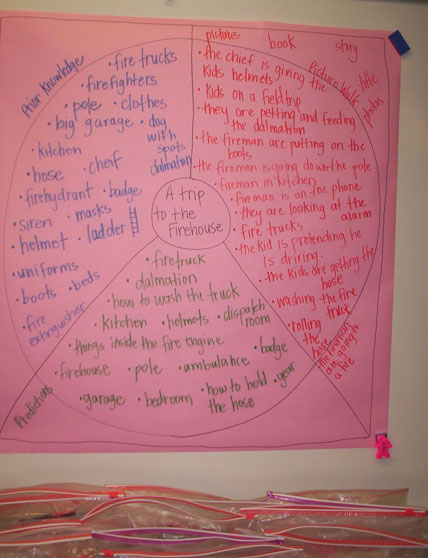
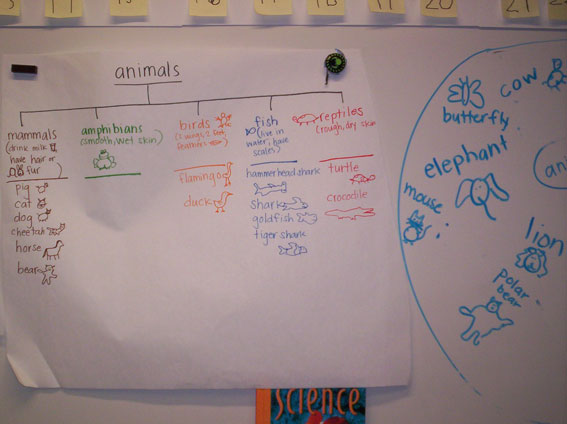
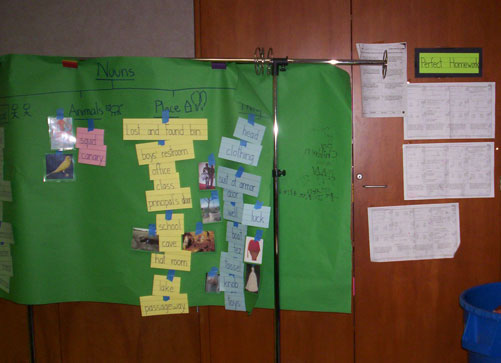

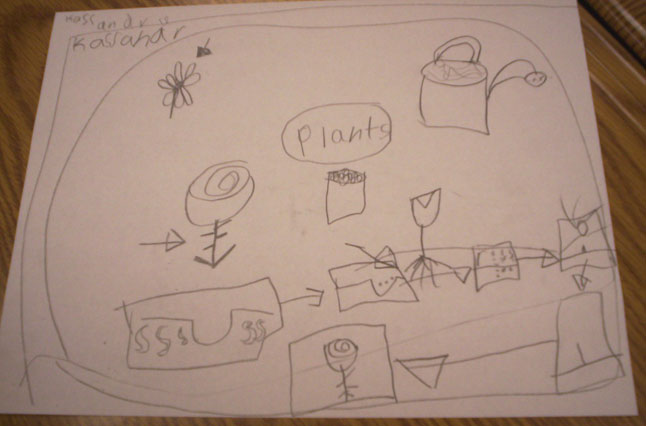
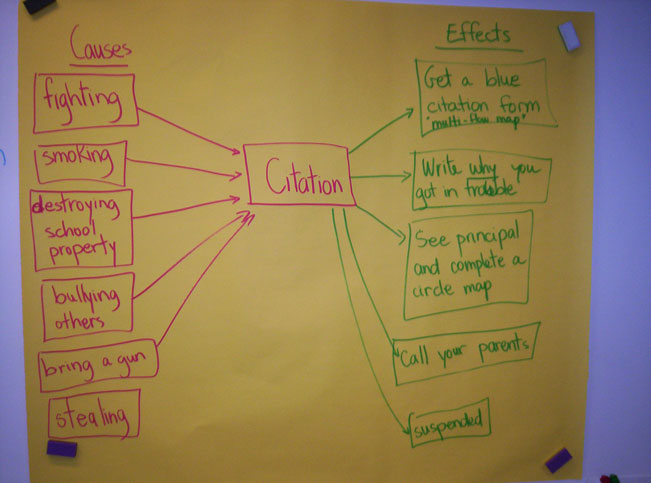
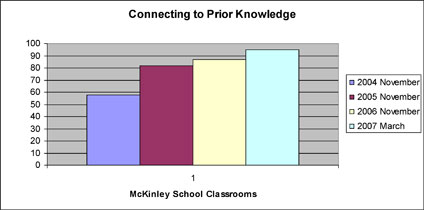
Bloom’s Taxonomy data from TASS walkthroughs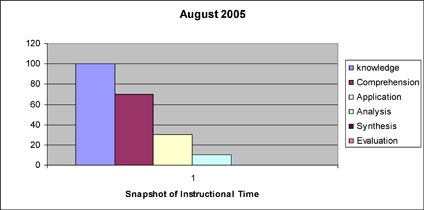
*There was no observation of synthesis or evaluation during this walkthrough*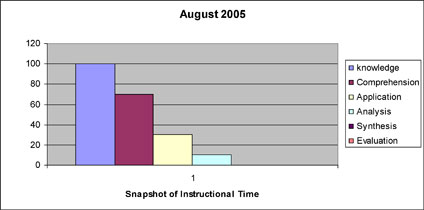
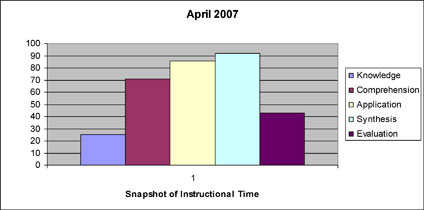
In comparing the three school years of data, from 2004-05 to 2006-07, it is very clear that the teachers are providing depth and complexity in their instruction to students. The student work observed by the TASS teams during the twenty-minute walkthroughs over these years indicated a significant increase in the higher level thinking processes such as application, synthesis and evaluation. This was demonstrated through the use of Thinking Maps® in content, process and product of instructional standards.
In looking at the following graphs, the desired outcome is to increase the scores in the higher levels of Bloom’s Taxonomy. It is very clear from the breakdown of each level that as the teachers received consistent training and coaching in Thinking Maps®, they improved the effectiveness of their instruction by addressing the higher levels of thinking.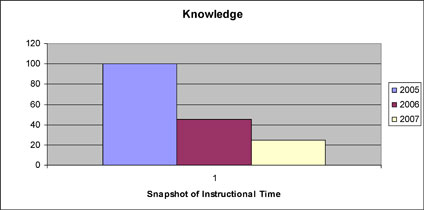
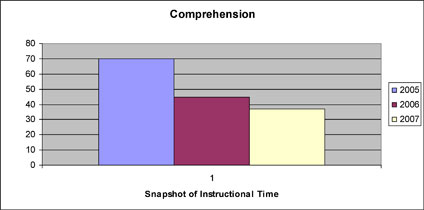
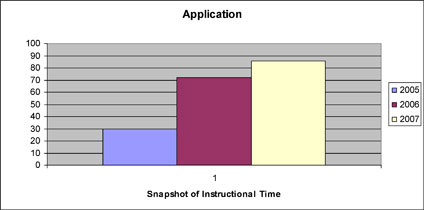
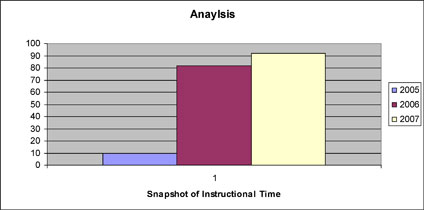
The two areas of synthesis and evaluation were non-existent in the first year of the TASS walkthrough process. In the last two years, synthesis and evaluation were observed in the classrooms through the use of Thinking Maps.
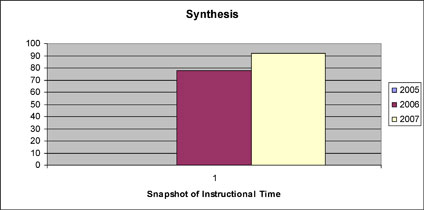
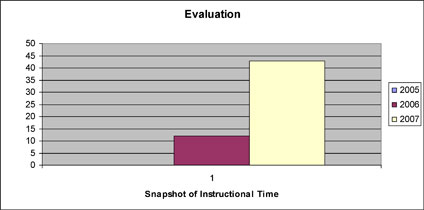
Also supporting the empirical data from the TASS walkthroughs, are the results from some questions in the teacher survey.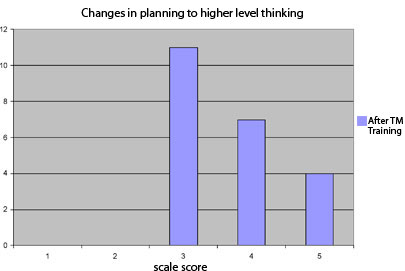
![]() After the T.M. training rate from 1 to 5 how much did your planning and instruction reflect changes from the knowledge level to higher level thinking skills such as application or synthesis?
After the T.M. training rate from 1 to 5 how much did your planning and instruction reflect changes from the knowledge level to higher level thinking skills such as application or synthesis?
Obviously, the data reveals that after the training for Thinking Maps®, teachers’ planning and instruction has been elevated to the higher levels of thinking according to the Bloom’s Taxonomy.
From this graph we can conclude that teachers feel that the students are not yet completely aware of the thinking processes during instruction time. One of the goals for the teaching staff at McKinley could be that all teachers feel the majority of their ELL students are aware of the eight thinking processes.
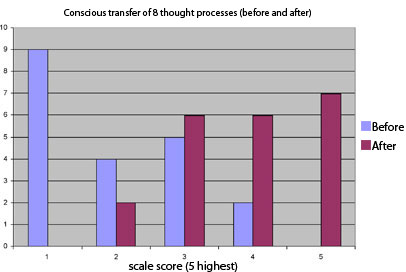
![]() Before T.M. to what degree were you aware of your students’ ability to consciously transfer the eight thinking processes to content learning?
Before T.M. to what degree were you aware of your students’ ability to consciously transfer the eight thinking processes to content learning?
From the data gathered 90% of the teachers indicated that they were not aware of the students’ ability to consciously transfer the eight thinking processes to content learning.
![]() After T.M. to what degree were you aware of your students’ ability to consciously transfer the eight thinking processes to content learning?
After T.M. to what degree were you aware of your students’ ability to consciously transfer the eight thinking processes to content learning?
After T.M. training 100% of the teachers from McKinley School have increased their awareness their students’ ability to transfer the eight thinking processes to content learning.
See the Menu on the left column at the top of this page for more sections in this case study on McKinley Elementary School in San Jose, California.